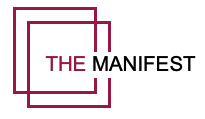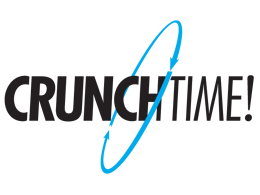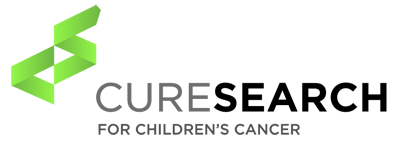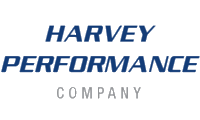INTRODUCTION
Assessment Results Summary
Thank you for completing the Digital Product Development Readiness Assessment.
This web page provides you with the questions that were asked in the assessment along with information about each of the 5 question groups and its role in being prepared to begin developing a digital product.
The guide is divided into the sections that correspond to the question groups you completed in the online assessment:
-
What the Results Indicate
-
Product Vision
-
Time
-
Budget
-
Scope
For insights specific to your assessment results, please schedule a conversation with one of AndPlus’ Product Development experts.
ABOUT YOUR SCORE
Achieve More. Go Faster. Go Further
 So, you’re probably asking yourself, "What do my assessment results indicate, and why is it important?” Good question. Let’s start by breaking down the response based upon your overall score.
So, you’re probably asking yourself, "What do my assessment results indicate, and why is it important?” Good question. Let’s start by breaking down the response based upon your overall score.
Low and Moderate Overall Readiness Assessment Score
If your overall score was below 65, we suggest that you don’t begin development effort until your score in all four areas is above 65 and you are in the “moderate” readiness category in all areas. If your score was in the “low” range, don’t panic! In our experience, many clients engage with us with an incomplete complete product vision and/or significant gaps in the one or several of the areas addressed by the assessment. AndPlus then guides the planning and preparations stages according to proven Agile methodologies and practices.
If your score was in the “moderate” response range, between 65 and 85, you are likely to be ready to consider beginning the development effort. However, be sure to address any gaps in the product vision area before proceeding. The Product Vision questions are vitally important to have documented responses to, as these questions will help all members of the development team have a clear understanding of the project objective before beginning the development effort.
In either a low to moderate overall score, AndPlus can assist with its Product Roadmap offering. Having completed many hundreds of product development projects, AndPlus works as an extension of your team helping you address these assessment questions and more – enabling a quick start and rapid development of your digital product.
High Overall Readiness High Score
If your overall readiness score was in the high range of 85 to 100… congratulations! Your score indicates you are well prepared to begin a digital development project and that you have increased your odds for a successful project outcome.
Nonetheless, you can still ask the question “What’s next?”
For your organization, the formal product mapping exercise is completed or nearly complete, in which case your next step could likely be the creation of a product prototype. (In this case, AndPlus can also assist with a rapid prototype development.)
A rapid prototype will go a long way to illustrating a final concept to senior management, the development team, investors, and most importantly, the users of the planned solution. With what appears to be a roughly functional product prototype, your audience can provide validation and feedback that can go a long way to producing a product that achieves the intended business objectives, creates competitive differentiation, establishes new business value, and also delivers an exceptional user experience.
Product Vision, Budget, Time, and Scope Scores
While the overall readiness score is the key indicator of readiness to begin a digital product development effort, the individual scores for each category are also important and are worthy of focus.
This is particularly true of the Product Vision category. As mentioned previously, the product vision is especially important in defining the high-level project readiness and comprehensive answers to the 7 product readiness questions will be extremely useful in aligning your development teams and/or your development partner.
Each of the other assessment categories, budget, scope, and time are also worthy of a closer look. Within each category any “no” response should be considered for completion because each of the categories is likely to have an impact on the development process and, more importantly, the results that the product achieves.
While a development project is a complex endeavor and not to be oversimplified, we created this readiness survey to help you identify the factors that can expedite the process and ensure success, while mitigating risks in the development process.
In any case, the team at AndPlus hopes that this digital product readiness assessment was helpful in preparing for your development project. Please contact us if we can assist you in your digital product development project.
PRODUCT VISION
The seven questions contained in the Product Vision section of the assessment are aligned with the product vision stage of the Agile development process - an iterative and incremental software development framework.

Agile-based development provides a flexible product development strategy where a development team and product owner work as a unit to reach a common goal.
The Agile process begins by creating a product vision which is a high-level description of the product to be created. A product vision is created to provide an overarching goal that guides everyone involved in the development effort. The product vision should fit a simple 7-stage format. An example is shown below:
- For: «target customer»
- Who: «needs»
- The: «product name»
- Is a: «product category»
- That: «product benefit, reason to buy»
- Unlike: «competitors»
- Our product: «differentiation or value proposition»
A complete and comprehensive product vision provides a clear description of what is to be achieved enabling all team members to understand business objectives, user needs, and key functionality to be created. While seemingly a simple task to complete, a well-constructed product vision takes some effort and a complete product vision goes a long way toward informing team members, gaining consensus of the project’s objectives, and aligning other aspects of the development effort.
For these reasons, the seven questions of the Product Vision portion of the assessment were constructed to mirror the objectives of the product vision stage of an Agile-based development framework. Because the product vision questions are essentially the starting point for a digital product development effort, they are, by comparison, weighted more heavily that some of the remaining 13 questions in this assessment survey.
Here are the 7 yes/no product vision questions asked in the assessment you completed:
Product Vision Assessment Questions
|
Question Title |
Question |
|
Product Vision: |
FOR TARGET CUSTOMER: Have you identified the target “customer” that will use the solution? (IE Our target customer is clients who have previously ordered from us.) |
|
Product Vision: |
WHO NEEDS: Have you identified and documented the problems this user faces? (IE “Who need to be able look up their comprehensive history of client orders, deliveries, returns, refunds, and …”) |
|
Product Vision: |
PRODUCT NAME: Have you created a product name that will be used to identify this project during development (or post-development)? (IE “The client self-service order history portal”) |
|
Product Vision: |
PRODUCT CATEGORY: Have you identified the product category for this solution? (IE “A desktop and web-based solution”) |
|
Product Vision: |
USER BENEFITS: Do you have a list of user benefits that support why the “customer” would want to use or buy the solution? (IE “That will enable the customer to have 24/7/365 self-service capabilities with the option to send results directly to the customers email account.”)
|
|
Product Vision: |
COMPETATIVE PRODUCTS: Have you identified competitive products that are similar to your intended product? (IE “Unlike XYZ Company’s Self-Service Robot and ACME’s Orderbot products…”)
|
|
Product Vision: |
COMPETITIVE DIFFERENTIATION: Can you identify clear differentiation to these competitive products and articulate the value to the customer? (IE “Our product uses ANI information along with NLP to make the order checking process 3 times faster and 100% accurate for customers.”) |
TIME
 Basic considerations that address “time” are a vitally important components to consider before commencing with a digital product development project. As one might expect, “time” factors can have a significant impact on other project components that make up the planning and execution of the project. For example, careful consideration of project timing will also enable project work to be planned as a coordinated set of actions with defined durations and deadlines that will help teams stay both aligned and on-task.
Basic considerations that address “time” are a vitally important components to consider before commencing with a digital product development project. As one might expect, “time” factors can have a significant impact on other project components that make up the planning and execution of the project. For example, careful consideration of project timing will also enable project work to be planned as a coordinated set of actions with defined durations and deadlines that will help teams stay both aligned and on-task.
While detailed timeline planning is not expected to have been completed in the very early planning stage, initial timing considerations should identify target completion dates for project phases as well as the overall project completion date. Identifying team member roles and staffing assignments will also help to avoid potential resource conflicts that can have a profound impact on project timing.
The following yes/no questions in the Time section of the readiness assessment address the initial high-level aspects of project timing.
Time-related Assessment Questions
|
Question Title |
Question |
|
Time: |
TARGET COMPLETION: Have you identified a required delivery date for the digital product? |
|
Time: |
PRELIMINARY SCHEDULE: Do you have completed a preliminary schedule for the project stages? |
|
Time: |
TEAM ROLES: Have you identified the support team roles and team members to fill those roles? |
|
Time: |
STAFF ASSIGNMENTS: Have you designated the individuals that will make up the support team working on the project? |
|
Time: |
EFFORT ESTIMATE: Have you anticipated the level of involvement that your internal team member might have with your external development partner? |
BUDGET
 It’s no surprise that every development is dependent on the resources allocated to the project. It’s also true that a well-executed cost/benefit analysis often heavily influences the allocation of funds and resources that are applied to a particular project. In addition, the cost of a development project is closely linked to the business objectives for the project, the desired features and functionality needed to achieve those business objectives, and the time needed to develop that required functionality.
It’s no surprise that every development is dependent on the resources allocated to the project. It’s also true that a well-executed cost/benefit analysis often heavily influences the allocation of funds and resources that are applied to a particular project. In addition, the cost of a development project is closely linked to the business objectives for the project, the desired features and functionality needed to achieve those business objectives, and the time needed to develop that required functionality.
With that in mind, it’s important to consider the cost-benefit relationship for a digital product and to have a corresponding budget established. The cost-benefit analysis will also help to identify the financial metrics that will be used to validate the project’s success and return, once the solution has been completed and implemented for a reasonable period of time.
While creating a budget may be the proverbial discussion about which came first, the chicken or the egg, establishing a rough budget based upon a well-documented cost-benefit analysis will go a long way to expediting the project planning process. With a budget established, the features and functionality required to accomplish the business objectives can then be aligned with the budgetary guidelines to ensure the project is adequately funded for completion.
For these reasons, the careful alignment of a development project with the planned budget is a critical component to have in place before starting development. The following 3 yes/no questions were used to identify your project readiness related to the project budget.
Budget-related Assessment Questions
|
Question Title |
Question |
|
Budget: |
BUDGET: Do you have a rough project budget established for creating the initial release 1.0 of the product? |
|
Budget: |
COST-BENEFIT: Have you identified a required delivery date for the digital product? |
|
Budget: |
BUSINESS OBJECTIVES: Have you identified the support team roles and team members to fill those roles? |
SCOPE
![]()
A project's scope documentation, explains the boundaries of the project, establishes responsibilities for each team member and it defines procedures for how communications will take place. Scope documentation may also address how completed work will be verified and approved, what features will be addressed in the project, and the resources that are likely to be required.
During the project, scope-related documentation helps the project team remain focused and on task and it assists the development team by establishing decision making guidelines as well as the process for communicating change requests or adjustments made during the development project.
The Scope section in this readiness assessment asks 5 yes/no questions that address topics that can potentially impact many areas of a digital product development project. This section should take about 1 minute to complete. Results for the Scope section will be displayed on the last page of the survey.
The Scope questions asked in the assessment are shown below and can be compared to your responses sent to you by email.
Scope-related Assessment Questions
|
Question Title |
Question |
|
Scope: |
COMMUNICATION: Have you defined the communication process needed to support the solution development? (IE the frequency of communication needed, the form of those communications, the participants, etc.) |
|
Scope: |
PRODUCT FEATURES: Have you identified the initial product release features/capabilities that are absolutely essential to support the business/user needs that you identified? |
|
Scope: |
TECHNICAL REQUIREMENTS: Do you have a list of technical requirements that support the key feature/capabilities you identified as part of the initial product release? (IE Are there: legacy product integrations, special regulatory requirements, security considerations, etc.) |
|
Scope: |
TECHNICAL RESOURCES: Have you identified the technology resources likely required to complete the project? (IE software tools, logins and other operational details) |
|
Scope: |
PROJECT DOCUMENTATION: Have you completed written documentation such as requirements documentation, UI wireframes, or user flows? |
WHAT'S NEXT
Kudos for checking out your preparedness before beginning a development project! Don’t be discouraged if the resulting score doesn’t ideally align with your expectation. The good news is that you have new insights about areas that can be addressed to help ensure the success of your next development project.
Regardless of your assessment ranking, the logical question is, "What's next?"
One of the most important things to do before plotting your course forward and beginning a development process is to focus the low scoring areas before beginning the development process. Whether you are developing your product using internal resources or working with a development partner, maximizing your preparedness will improve outcomes, expedite development, reduce development costs, and help to ensure an outcome that achieves business objectives and delivers an exceptional user experience.
While the challenge of developing products that align with your organization's transformation strategy may seem daunting, don't be discouraged.
AndPlus can help!
Additional Resources
While you are visiting the AndPlus website, checkout these additional resources to help you diagnose your challenges, identify solutions, and inspire you for the transformation journey ahead:
- Podcasts
- White Papers
- Blog Posts
- Online Guides
Feel free to visit our Resources Library and select information from the many topics and formats available!
ASSESSMENT SCORING
The AndPlus Digital Product Development Readiness Assessment tool was designed to give you a preliminary evaluation of your readiness to begin a digital development process. With many hundreds of development projects completed, the AndPlus engineering staff considered the key questions and their importance that would best indicate whether a development team had the necessary information in place to begin a project. Each question was then scored based upon these weighting and importance factors.
The 20 questions are arranged into 4 categories and each category was scored individually. These 4 scores were also used to calculate an overall readiness score (also indicated in the response email you received).
Scoring for each category (product vision, time, budget, and scope) along with the Overall Project Readiness score, was consistent with the following readiness grading and colors:
|
Readiness |
Score Range |
|
Low (red) |
0 to 54 |
|
Medium (yellow) |
55 to 84 |
|
High (green) |
85 to 100 |
Many of the assessment questions are utilized by AndPlus in the development process which is based upon proven Agile development methodology.














